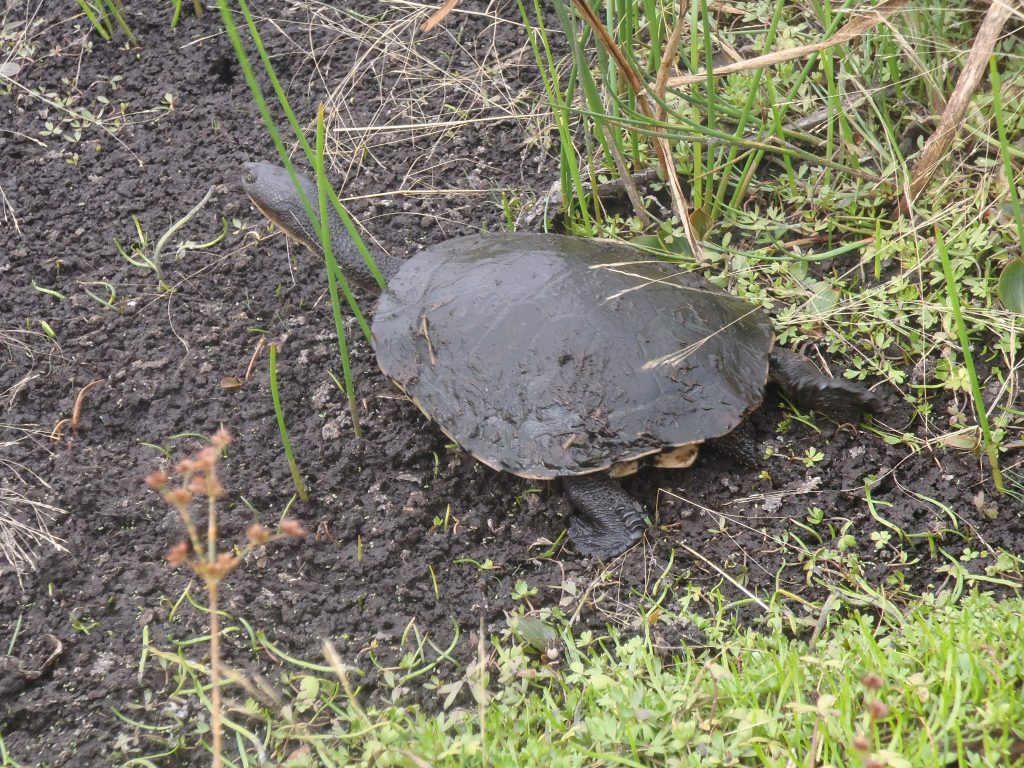Getting to know the aquatic life at Mt Burr Swamp – including a threatened crayfish
Over the summer months, Sheryl, Bryan, Jess, Taylah – along with students from Grant High School – have been exploring the wetlands at Mt Burr Swamp to obtain a better understanding of the aquatic fauna on the property. While the largest and most prominent wetland is of course Mt Burr Swamp itself, there are in fact 59 other wetlands, including at least ten classified as either high or very high value wetlands.
In terms of the sampling, seine nets and dip nets were used in shallower wetlands, while fyke nets were set overnight at four sites within Mt Burr Swamp. So, what did we find? Of the 60 wetlands on the property, sixteen contained water at the start of summer, while only five had water remaining by mid-March. This included the main wetland, two wetlands in the south-western corner of the property, and two wetlands which have been reduced to dams.
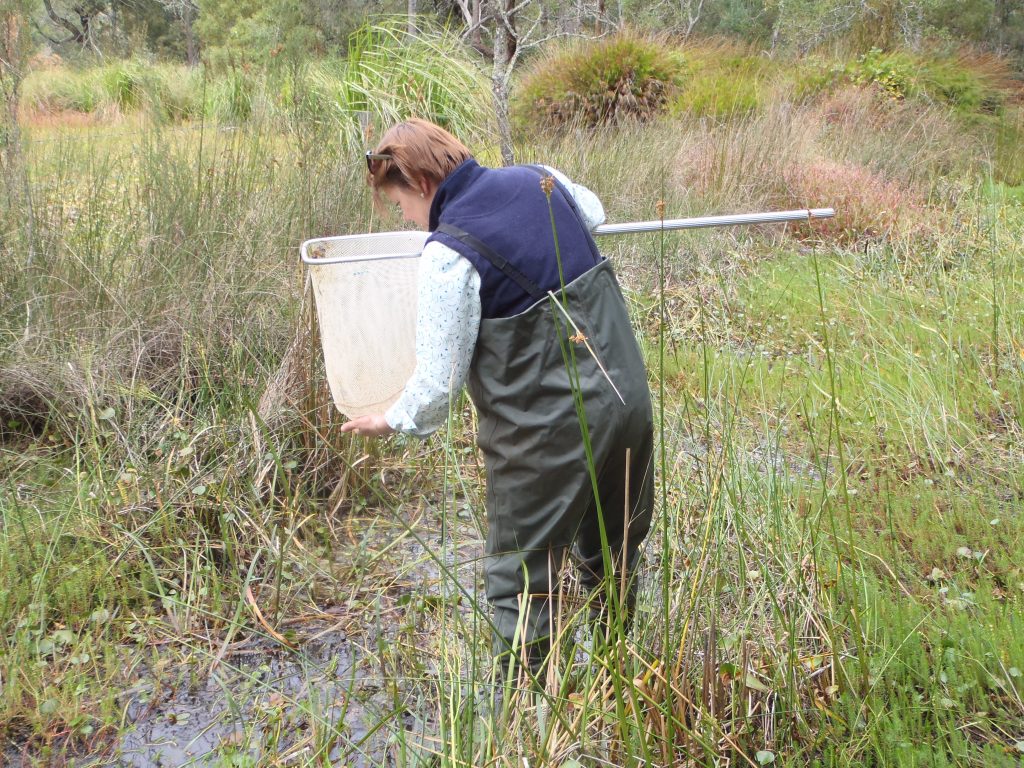
Of the sixteen wetlands surveyed, only four were found to not support fish, which is quite remarkable! We were excited to confirm that the threatened Little Galaxias is widespread, occurring at thirteen of the sixteen wetlands. This included several wetlands that were dry by February or March, reflecting the species unique ability to aestivate and persist without surface water.
The other fish species detected, the Southern Pygmy Perch, was confined to the main wetland, and two other wetlands which concentrate down to a stock dam during summer. Despite having limited vegetation and transparency (water clarity), these dams appear to provide suitable water quality for native fish (i.e. low salinity and moderate dissolved oxygen levels). While the dams are far from ideal habitat, they clearly provide important refuge for fish during the summer months, allowing populations to rapidly repopulate once the wetlands refill.
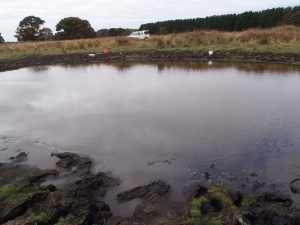
One of the wetlands (turned dam) found to be supporting Little Galaxias and Southern Pygmy Perch. 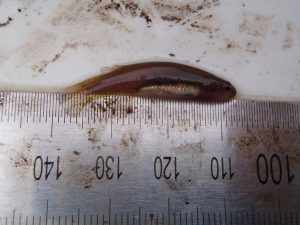
Threatened Little Galaxias 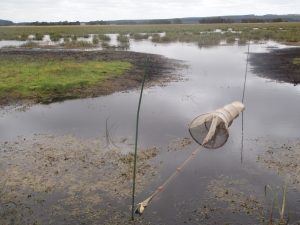
One of the fyke netting sites within Mt Burr Swamp
Overnight fyke netting in Mt Burr Swamp revealed a very abundant fish population. Across four sites within the wetland, a total of 5830 Southern Pygmy Perch were recorded, with over 3000 recorded at just one site. A variety of lengths were recorded, the largest being a 79 mm which would have been at least 3 years of age. This data indicates the species has undergone regular successful recruitment for at least the past two years, since first being detected in the wetland in 2019. Little Galaxias were less abundant in Mt Burr Swamp, with a total of 106 fish recorded across the four sites.
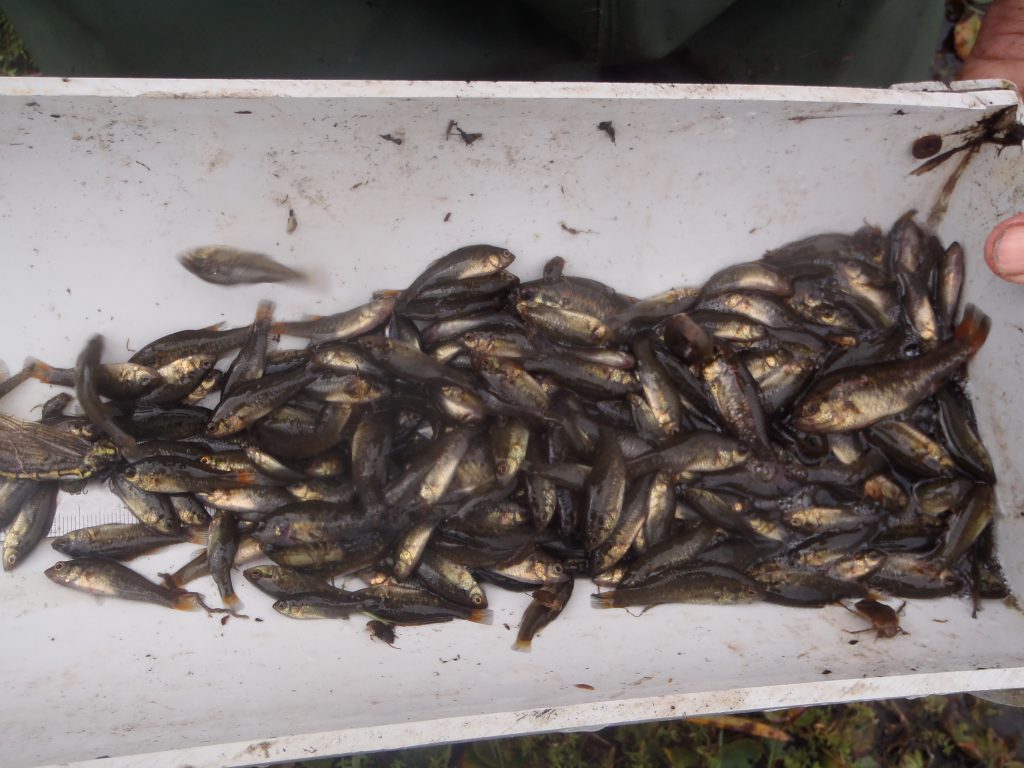
While dip netting in one of the high value wetlands in the south-western corner of the property, Nicole found a little crayfish in her net. We confirmed it to be the threatened Western Swamp Crayfish (Gramastacus insolitus), making it the first record on the property! The species is endemic to the Grampians and limited areas of South East SA, and unlike a lot of crayfish, rarely exceeds 30 mm in length. The low salinity and high amounts of emergent and fringing vegetation in the wetland provide ideal habitat for this wetland dependant crayfish. We continued dip netting and recorded a further three individuals, all of which were females. On first glance they appeared to have tiny eggs under their tales, but further investigation revealed they were temnocephalan eggs. These are a type of small flatworm that crawl over crayfish and lay their eggs. Other crayfish, including species of Cherax and Euastacus crayfish also hosts for similar species.
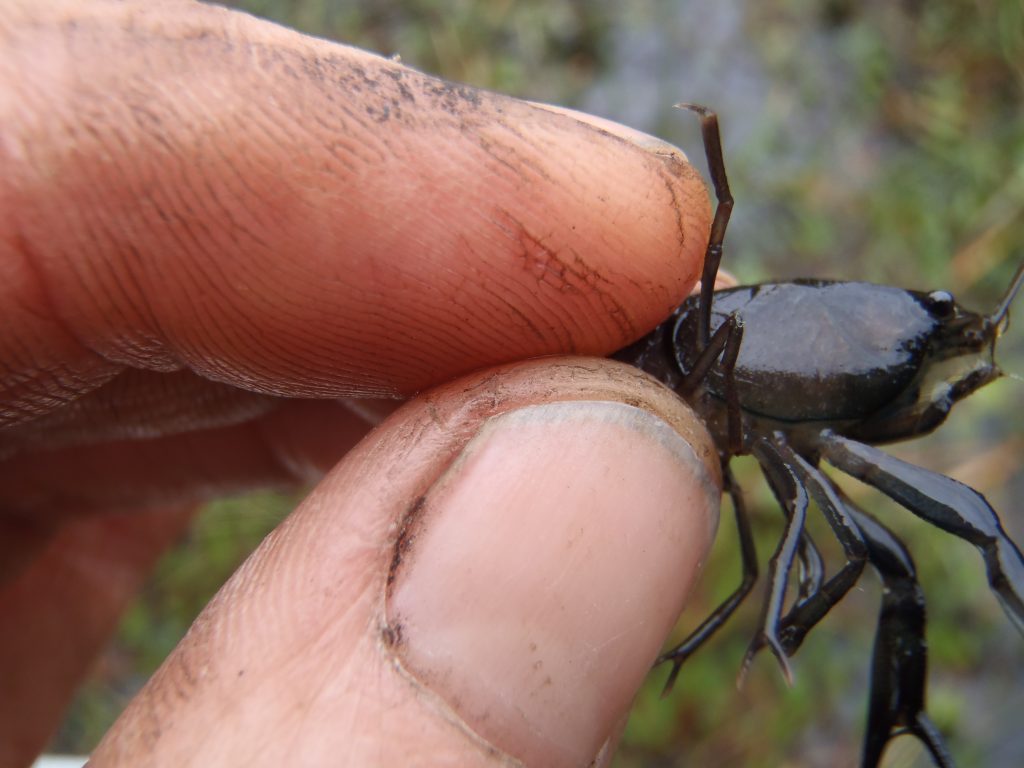
The threatened Western Swamp Crayfish was recorded for the first time on the property, occurring in one of the high value wetlands (pictured in first image). 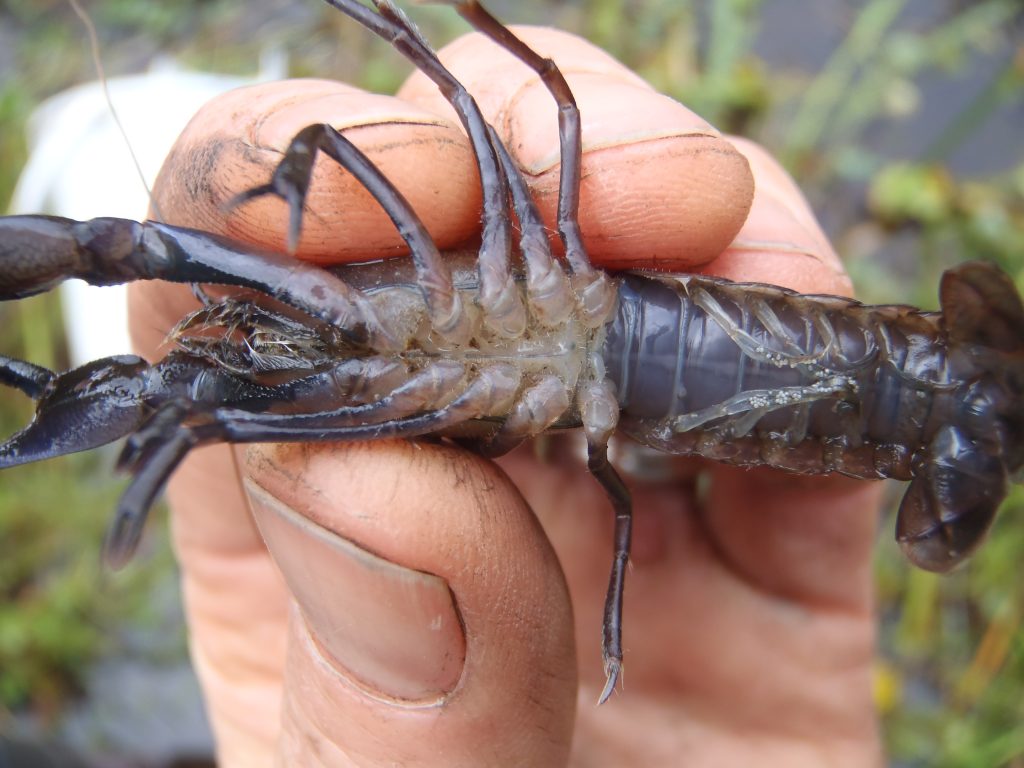
A symbiotic relationship: the temnocephalan flatworm lays their eggs under the tail of a Western Swamp Crayfish
Other species detected opportunistically, included the Long-necked Turtle (confined to dams and Mt Burr Swamp) and Common Yabby (which was widespread). Frog species (and their tadpoles) were also recorded, including the threatened Growling Grass Frog, Pobblebonk, and Striped Marsh Frog.
The surveys at our Mt Burr Swamp property have highlighted the importance of the diverse range of habitats on the property – from the stock dams which appear to provide summer refugia for Southern Pygmy Perch (a species that relies on permanent water), to the high value wetlands which support the threatened Little Galaxias and Western Swamp Crayfish. The permanent water at Mt Burr Swamp is supporting what has to be one of the most significant populations of Southern Pygmy Perch in the South East.
We look forward to getting back out there once the wetlands refill to learn more about this Reserve’s aquatic fauna, as well as watching the wetland values continue to improve in the future as we gradually expand restoration works to reverse artificial drainage impacts across more of the property.
